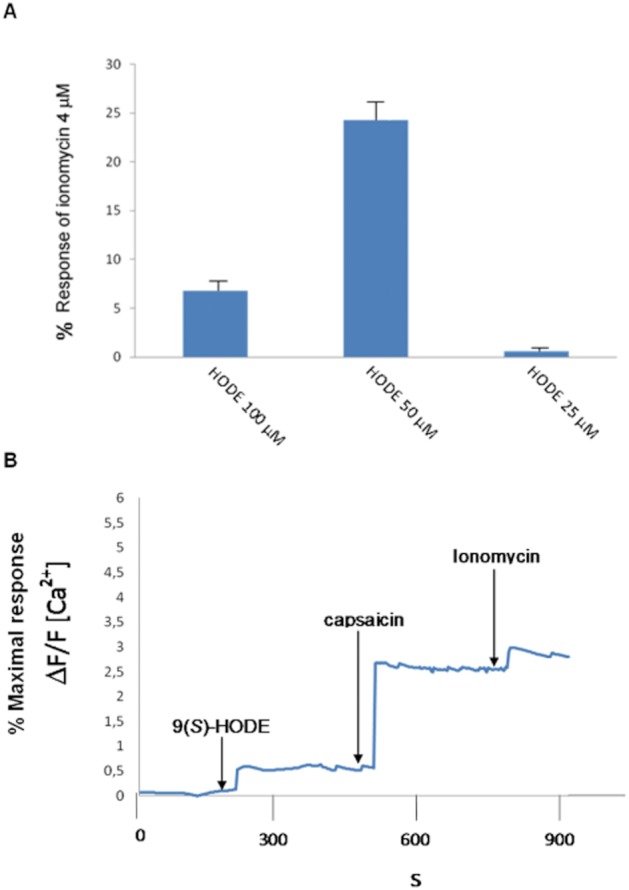Figure 3.

9(S)-HODE 50 μM induces an increase in [Ca2+]i in rat DRG neurons. (A) Normalized increase in Fluo-4 fluorescence (mean ± SD) induced by 9(S)-HODE, 25, 50 and 100 μM. The application of 9(S)-HODE in the bath triggered a calcium response in a concentration-dependent manner. The 25 and 100 μM concentrations of 9(S)-HODE were less efficacious than the 50 μM concentration. Data are means ± SD of measures made in n = 30 cells for each concentration tested. (B) Shows the representative time course of the Fluo-4 signals recorded from 20 to 40 cells as response to 9(S)-HODE (50 μM), capsaicin (1 μM) and ionomycin (4 μM). Arrows indicate when compounds were added. Images were collected continuously for 30 min. Note that 9(S)-HODE exhibited a low efficacy (on average 24.7 ± 3.5% of the effect of 4 μM ionomycin and 27.4 ± 5.2% of the effect of 1 μM capsaicin; means ± SD of n = 30).
